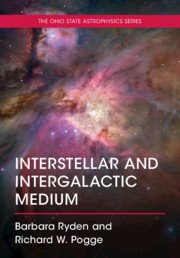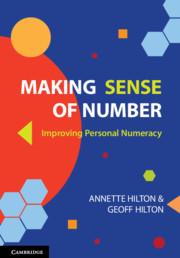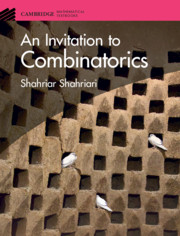Refine search
Actions for selected content:
36831 results in Cambridge Textbooks

Interstellar and Intergalactic Medium
-
- Published online:
- 22 September 2021
- Print publication:
- 25 March 2021
-
- Textbook
- Export citation

Making Sense of Number
- Improving Personal Numeracy
-
- Published online:
- 17 September 2021
- Print publication:
- 15 September 2021
-
- Textbook
- Export citation

First Peoples in a New World
- Populating Ice Age America
-
- Published online:
- 16 September 2021
- Print publication:
- 07 October 2021
-
- Textbook
- Export citation

An Invitation to Combinatorics
-
- Published online:
- 16 September 2021
- Print publication:
- 22 July 2021
-
- Textbook
- Export citation
12 - Managing Globally
- from Part III
-
- Book:
- International Business
- Published online:
- 26 August 2021
- Print publication:
- 16 September 2021, pp 330-358
-
- Chapter
- Export citation
7 - Building Data and Knowledge
- from Part II
-
- Book:
- International Business
- Published online:
- 26 August 2021
- Print publication:
- 16 September 2021, pp 168-199
-
- Chapter
- Export citation
1 - The International Business Imperative
- from Part I
-
- Book:
- International Business
- Published online:
- 26 August 2021
- Print publication:
- 16 September 2021, pp 3-34
-
- Chapter
- Export citation
6 - Developing and Emerging Markets and Their Integration
- from Part II
-
- Book:
- International Business
- Published online:
- 26 August 2021
- Print publication:
- 16 September 2021, pp 145-167
-
- Chapter
- Export citation
13 - Ownership, Governance, and Sustainability
- from Part IV
-
- Book:
- International Business
- Published online:
- 26 August 2021
- Print publication:
- 16 September 2021, pp 361-390
-
- Chapter
- Export citation
11 - International Supply Chain Management
- from Part III
-
- Book:
- International Business
- Published online:
- 26 August 2021
- Print publication:
- 16 September 2021, pp 297-329
-
- Chapter
- Export citation
Glossary
-
- Book:
- Diodoros of Sicily: <I>Bibliotheke Historike</I>
- Print publication:
- 16 September 2021, pp 266-270
-
- Chapter
- Export citation
Preface
-
- Book:
- Diodoros of Sicily: <I>Bibliotheke Historike</I>
- Print publication:
- 16 September 2021, pp ix-x
-
- Chapter
- Export citation
1 - Alibaba and Its Influence on International Market
- from Case Studies
-
- Book:
- International Business
- Published online:
- 26 August 2021
- Print publication:
- 16 September 2021, pp 439-440
-
- Chapter
- Export citation
Preface
-
- Book:
- International Business
- Published online:
- 26 August 2021
- Print publication:
- 16 September 2021, pp vii-xi
-
- Chapter
- Export citation
Frontmatter
-
- Book:
- International Business
- Published online:
- 26 August 2021
- Print publication:
- 16 September 2021, pp i-iv
-
- Chapter
- Export citation
6 - HSBC: Guanxi for Internationalization
- from Case Studies
-
- Book:
- International Business
- Published online:
- 26 August 2021
- Print publication:
- 16 September 2021, pp 455-458
-
- Chapter
- Export citation
3 - The Essence of Culture
- from Part I
-
- Book:
- International Business
- Published online:
- 26 August 2021
- Print publication:
- 16 September 2021, pp 55-80
-
- Chapter
- Export citation
Index
-
- Book:
- Diodoros of Sicily: <I>Bibliotheke Historike</I>
- Print publication:
- 16 September 2021, pp 278-310
-
- Chapter
- Export citation
Part IV
-
- Book:
- International Business
- Published online:
- 26 August 2021
- Print publication:
- 16 September 2021, pp 359-360
-
- Chapter
- Export citation
7 - The Bell Boeing V-22
- from Case Studies
-
- Book:
- International Business
- Published online:
- 26 August 2021
- Print publication:
- 16 September 2021, pp 459-465
-
- Chapter
- Export citation
